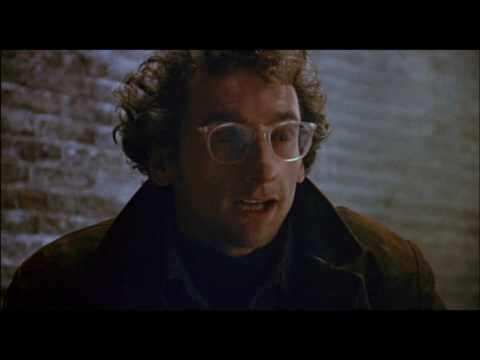Reality turns into nightmare in the underappreciated horror classic Jacob’s Ladder

Watch This offers movie recommendations inspired by new releases or premieres, or occasionally our own inscrutable whims. With the Sundance sensation Hereditary opening in theaters this week, we’re taking a look at other movies that make our skin crawl.
Jacob’s Ladder (1990)
Horror movies often have a designated “good part,” where the visual imagination picks up and the editing tightens and you are delivered the cathartic, otherworldly experience that brought you to the film in the first place. Sometimes it’s as jarring as a jump scare; other times it’s carefully orchestrated over minutes, winding up and wrenching repeated convulsions out of the audience. Jacob’s Ladder has “good parts,” all right, but the film seems determined never to let you know where they are or when they’re coming. The film follows Jacob Singer, a Vietnam vet wandering a New York City that keeps transforming, unexpectedly and erratically, into hell. It sets a template early on, with a walk through a subway that goes from gradually unnerving (flashing lights, a bloodless old lady) to phantasmagoric (a fleshy tail curling up beneath a homeless man’s blanket, a train full of the damned barreling by). Thereafter it delights in feints and false starts, like a chiropractic visit full of menacing “adjustments” that gradually takes on an eerie glow without ever going full-on horror, or a hallucinatory plunge into an ice bath that climaxes with—several minutes of mundane domestic bliss.
For director Adrian Lyne, the movie represents an outlier in a filmography largely devoted to erotic thrillers: Indecent Proposal, Fatal Attraction, 9 1/2 Weeks. You can see some of that other work here, though—not just via the film’s exploration of pyschosexual boundaries, but also in the way it suffuses conversations and physical encounters with a primal, simmering tension. Tenderness that might suggest the erotic in his other films here alludes to a vast, conspiratorial evil. Despite this, Lyne’s style is relentlessly sober, eschewing music or flash in favor of gradual transitions from the real world to the hell in Jacob’s mind. Or is he stuck in the opposite—a hell that keeps disguising itself as reality? You’re never quite sure if Jacob’s delusional, dead, or still bleeding out somewhere in the jungle, and the film dabbles in dream logic with a rare subtlety. (His job seems to transform gradually over the course of the film, and intentional anachronisms give it all an uneasy timelessness.) The script, by Bruce Joel Rubin, lays it on thick with biblical references—pretty much every name is from the Old Testament, including a spectral seductress literally named Jezebel—but Lyne’s spirited curation of artistic influences (Francis Bacon, Joel-Peter Witkin, Brothers Quay) elevates the material to something less didactic.
Much of the terror melts away in the film’s final third in favor of a pair of logical explanations and a much-deserved resolution for Robbins’ character. The film’s a particularly brutal example of a movie gaining a reputation as being “too” scary: Some 20 minutes of horror scenes were extracted after test audiences balked. You can view them online today, and they slot neatly into the final cut, resolving plot lines with lurid grace and cathartic final blasts of gore. Without them, the film becomes a structural oddity, hitting its horrific high point surprisingly early via an all-out hospital scene full of naked middle-aged men, shrieking biological impossibilities, increasingly thick chunks of human flesh, breastfeeding mothers (?), dead children, and hallucinatory surgery. On the other hand, it’s the good part to end all good parts—a few minutes of horror so masterfully realized that they assure the film’s place in the pantheon despite any unevenness elsewhere. For Lyne’s only foray into the genre, it’s a hell of a showing.
Availability: Jacob’s Ladder is available to rent or buy through the major digital services. It can also be obtained on DVD or Blu-ray from Netflix, Amazon, or possibly your local video store/library.